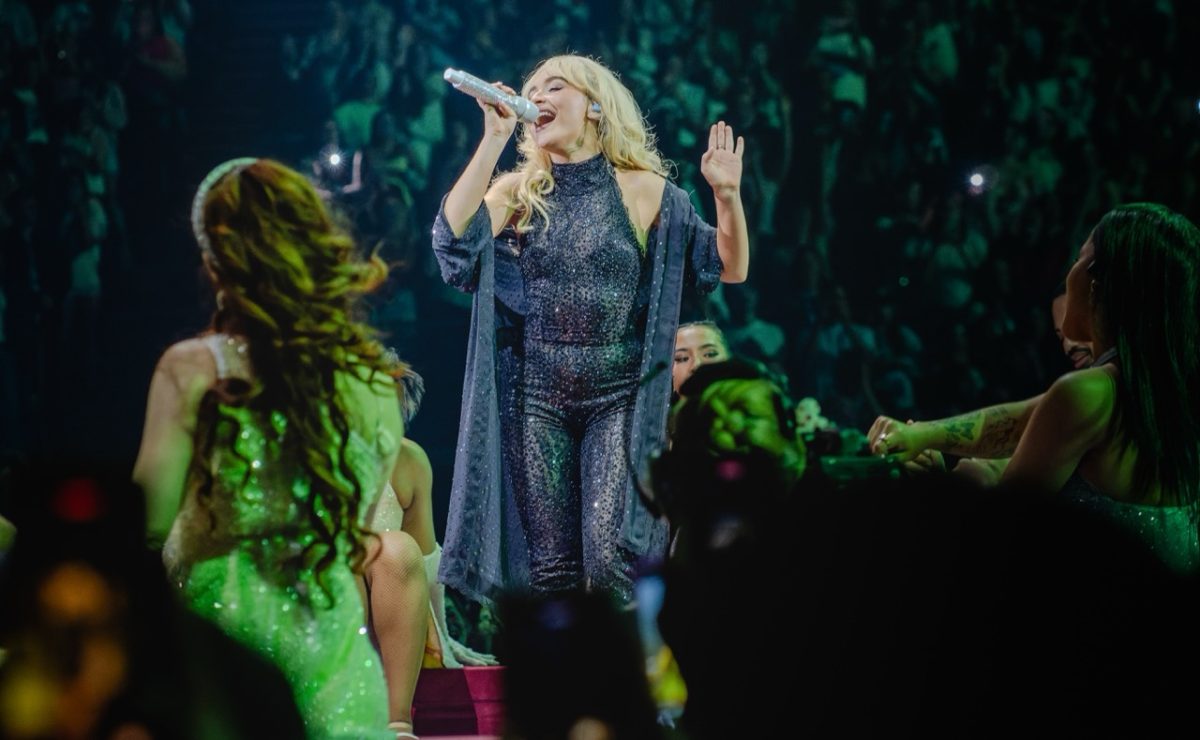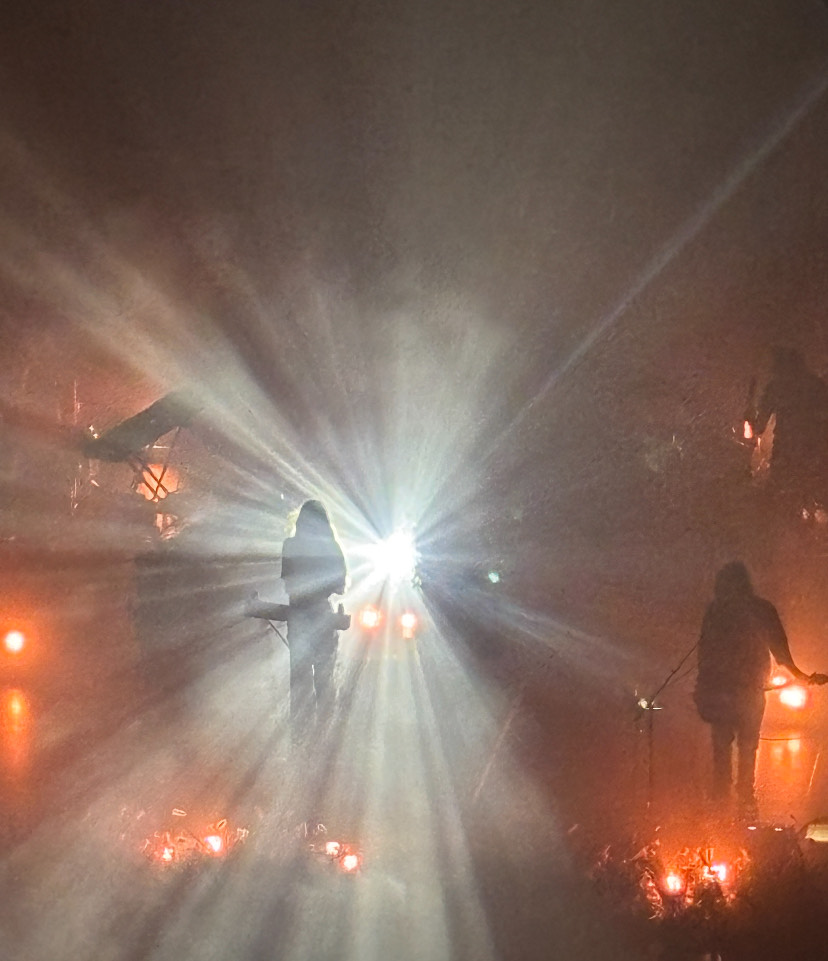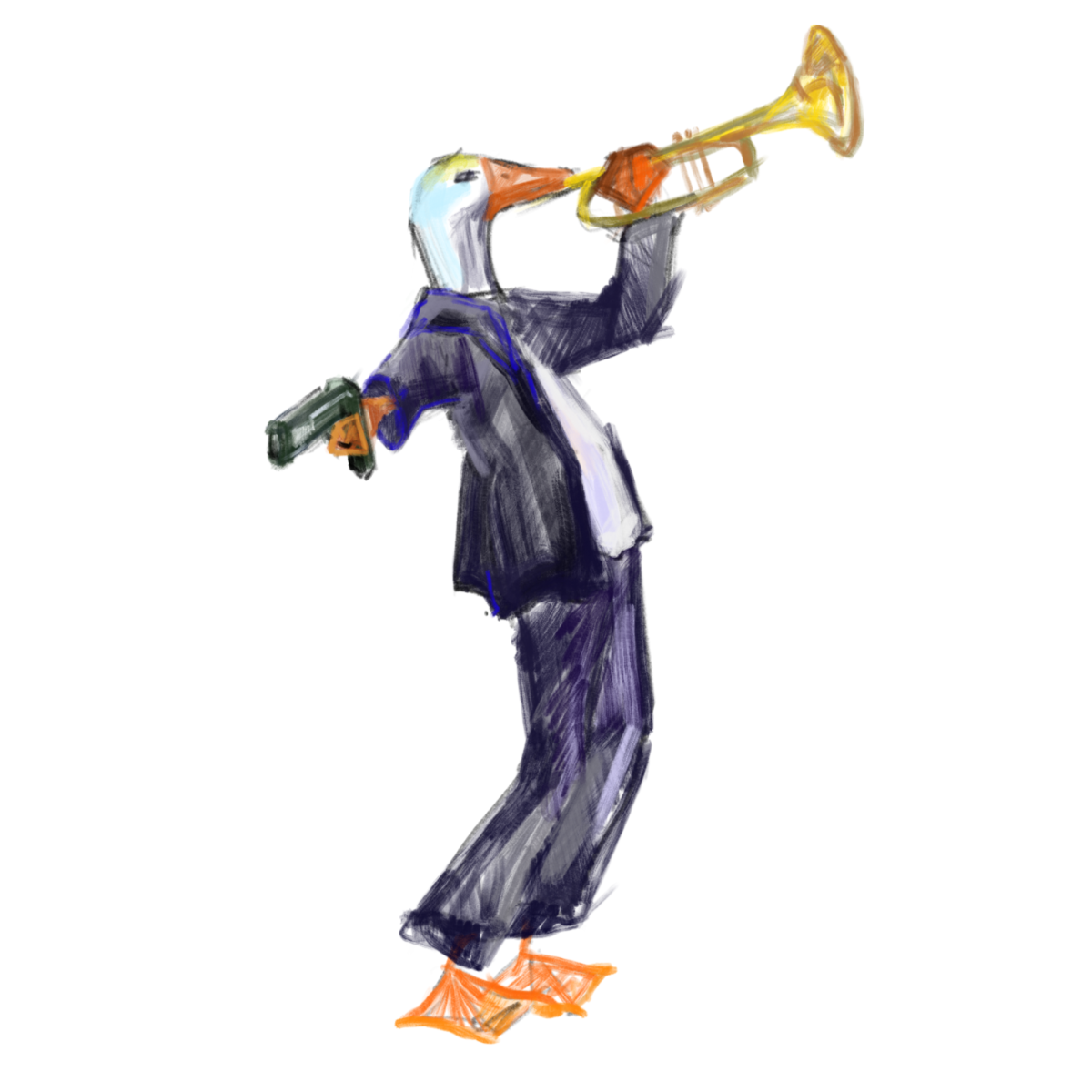Allison Wegren Metzger ’09 collaborated with Catherine Reinhart to create Common Threads Exhibition. Drawing inspiration from murals by the Iowa artist Grant Wood, Metzger and Reinhart created many works on paper and an interactive sculptural instalation. I spoke with Metzger on the phone to discuss the exhibit, her creative process and her time at Macalester.
If you happen to be in Ames, IA over Fall Break, you can check out the exhibit. It runs throughout October, at the ISU Design on Main Gallery.
Could you briefly describe your exhibit?
Catherine Reinhart and I have created a series of cooperative works on paper, as well as a large scale interactive sculptural installation in the gallery. We have a number of individual pieces that people can add to the existing piece.
All of the work is based on the murals by Grant Wood that are in the Iowa State University library. There are two murals and one of them is divided into a couple sections. One of the murals is a depiction of the breaking of prairie land, so starting to till the soil. The second grouping of murals is various depictions of different kinds of sciences that were the base of Iowa State University when it started. So there was home economics, agricultural sciences and veterinary sciences as well as mechanical, aerospace and aeronautical engineering. Those murals are what we based all our inspiration and our color palette on.
How did you and Catherine Reinhart begin working together?
Catherine and I attended the University of Kansas for graduate school together. We were in the same textiles department. She was a year ahead of me, but we always worked on similar themes in our individual work, specifically the themes of community, gender role expectations, as well as growth and traditional domestic and exterior spaces. So when this opportunity to create collaborative work about those themes came up we jumped at the chance to work together.
What techniques or mediums did you use when creating the exhibit?
We did a lot of drawings on paper with either graphite or India ink. We also used gouache, watercolor and natural indigo dye. Because we’re both textile artists, we both did some stitching either directly on the paper or on the fabric that we then attached to the paper. It’s kind of collage-feeling in some of the pieces. In addition, we cut different forms and shapes from different paper and then attached them to the final pieces. We did some screen printing too.
How did you draw inspiration from Grant Wood’s murals?
Sometimes it was through the themes, such as the feelings of community and growth, but also we took the basic ideas of agriculture, the traditional women’s work of child-rearing, food preparation and more textiles-based things. We replicated patterns from the murals in some places. We referenced the land with horizon lines and some more natural forms, like some of the leaves and plants that are native to the area. Also, we took our color palette directly from those murals. We actually went to a hardware store and got paint chips and matched them to the murals.
Could you describe the interactive sculpture?
It’s primarily wood, so there’s various sizes of wooden boxes and pieces of wood that are stacked, and then there’s various attachment points, whether that be holes drilled into the wood or nails or hooks and things like that. We have some dowels. And we have different colored threads. The thread colors are drawn from the murals themselves.
We’ve invited the community to attach the thread from different points, to add the small wooden pieces and dowels onto the larger boxes or to move the boxes around to change the landscape of the sculpture. So it’s an ongoing, changing piece throughout the month of October. A big part of us doing the large-scale interactive sculptural piece was to ensure that the community is physically participating in the gallery space. So we wanted a physical feeling of community in the space, bringing in different people’s backgrounds and abilities.
We scheduled events to occur throughout the month of October. Each Thursday evening, there’s going to be a small opening for an hour where people from the community are welcome to come. Catherine is going to be there and say, like, “I personally think that this piece could go here. Does anyone else have an idea?” It’s more geared to family activities, so younger kids feel comfortable participating.
How did your time at Macalester prepare you for what you’re doing now?
I think Macalester was really integral in creating my desire to be a part of a larger community. I think that a lot of times artists—maybe all people but as an artist I can only speak from my own experience—tend to be somewhat withdrawn into themselves and their creating process. So being at Macalester and being a part of the Mac community really was very eye-opening as far as how much more successful you can be if you don’t let yourself get sucked into the studio for days on end. Participating in the community can really make your work stronger.
What advice would you give to Macalester students who want to do something artistic after they graduate?
I would say, as scary as it is, to go for it. My husband and I are both artists and we recently started our own business. It’s both terrifying and incredibly rewarding, which is something that is not necessarily the case in other jobs I have held. Sometimes you’ll work a job just to make money, and that’s fine. I’m doing that as well; I’m a server at a restaurant. I enjoy that, but that’s money I use to pay for my business. Sometimes you have to really be willing to jump far outside of your comfort zone in order to make your dreams of being a self-sustaining artist real.
What’s your business?
Our business is called Midnight Oil Studio and Workshop. We focus on imagery of Americana, so American landscape and architecture and pop culture and inventions. It’s something that my husband and I are both passionate about. We love traveling; we love seeing the quirky roadside attractions that are speckled all across the US. This was a way that we could put all our passions into one place and constantly be enthusiastic about what we’re doing.
We create these screen prints. They are fine art screen prints, so they’re on paper and they’re usually around nine to 15 layers (that’s screenprinting speak for a lot of different colors and a lot of work). It’s really fun and we love the process.







Joanne Hemmings • Sep 11, 2019 at 10:40 pm
I have really learned newer and more effective things by your website. One other thing I would really like to say is that often newer computer os’s are inclined to allow far more memory to be utilized, but they in addition demand more memory simply to work. If people’s computer could not handle additional memory along with the newest application requires that storage increase, it usually is the time to shop for a new Laptop or computer. Thanks
Jennifer Wallace • Sep 10, 2019 at 4:16 pm
YouTube video lessons are well-known in entire world, since it is the leading video sharing website, and I turn out to be too happy by watching YouTube videos.
Mary Harris • Sep 5, 2019 at 11:11 pm
Nice post. I was checking constantly this weblog and I’m impressed! Extremely useful information particularly the closing section 🙂 I care for such info a lot. I used to be looking for this certain information for a very long time. Thank you and good luck.